
Up at the crack of dawn because who says clichés shouldn’t be lived by on occasion? Looking out the front door at the frozen cars gave me pause, but not so much to stop our momentum to catch the sunrise and see if the bird trail lived up to its name.
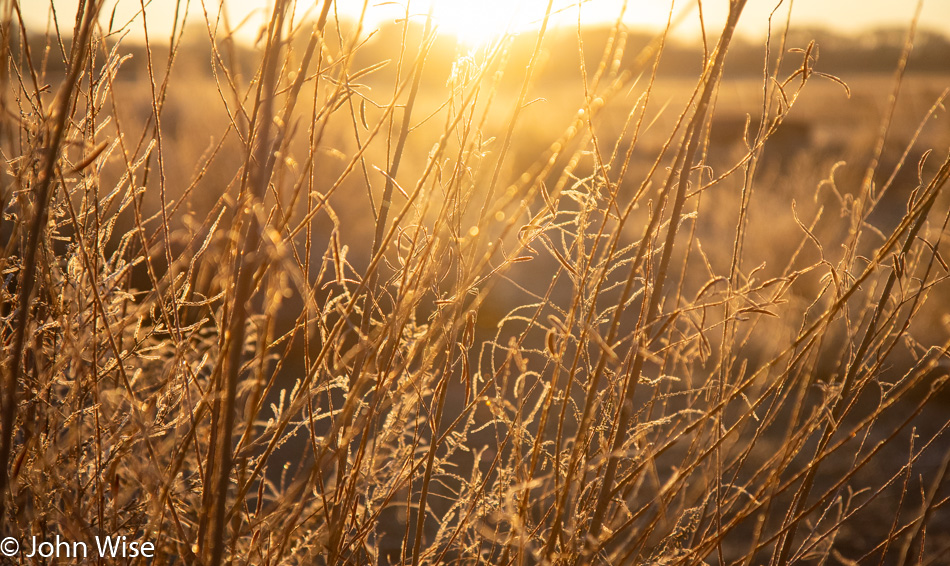
The grasses are alive as early birds flutter undercover of the brush. Overhead, we can hear the approach of the sandhill cranes long before we see them. Cranes turn out to be quite common here in the area at this time of year. Last night, we learned of the Wings Over Willcox festival that celebrates the cranes. It is held each January, and we will try to place a permanent note in our heads to visit next year.
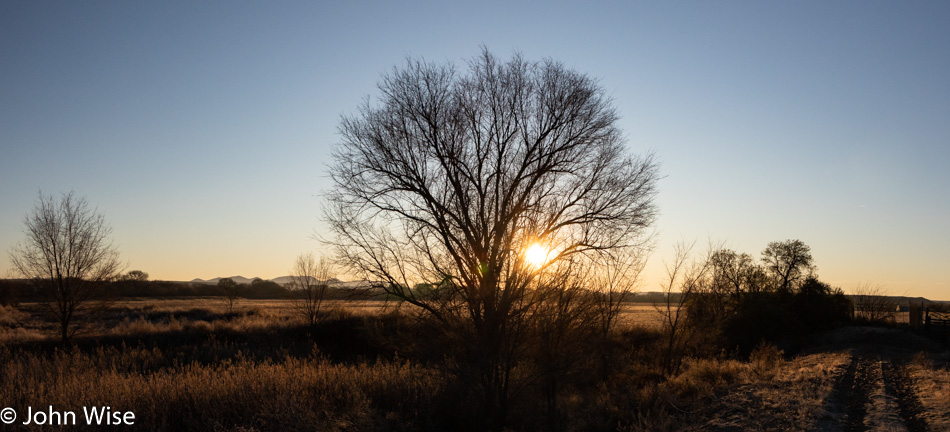
Our walk along the Gila River this morning took us on a mile-and-a-half long loop trail under a clear, frosty 34-degree blue sky here near the Arizona and New Mexico state line. The bird trail ended up being well worth the minor effort to bundle up and get a little exercise in before breakfast, and with the eight o’clock hour approaching (the time we told our hosts that we’d like to eat), we had to head back.
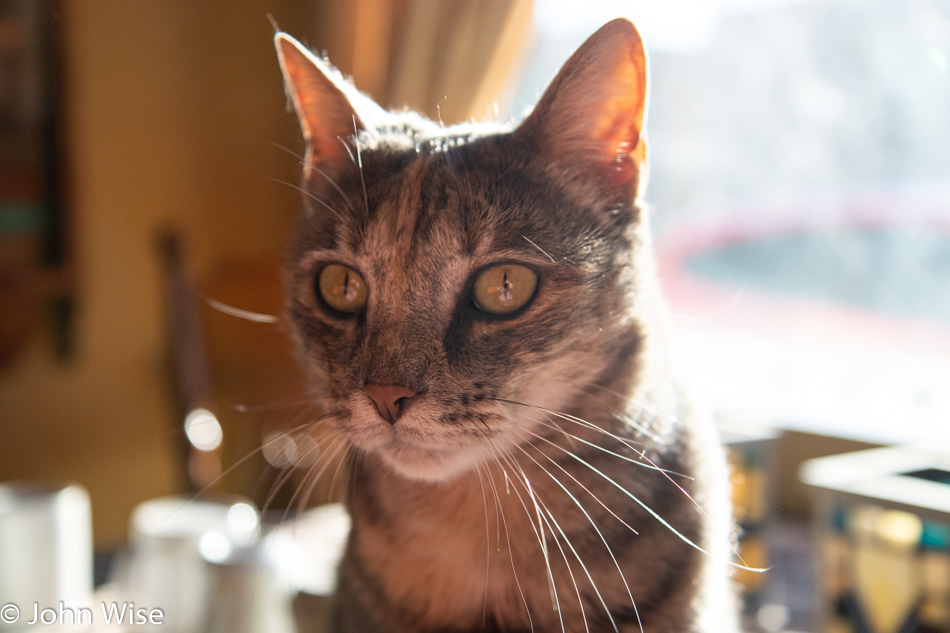
Maliki the Cat enjoying the warm sun and a snuggle in front of the big window at the Simpson Hotel. As much as the Simpson acts as a hotel, it has a dual role as Bed & Breakfast. Deborah and Clayton, the proprietors of this historic building, made us a terrific homemade, gourmet breakfast, allowing us to move at a slower pace than would be typical when we are anxious to get out and start exploring the area.
Joyce and Juliette came down to join us after a bit, which slowed us down yet again. Talk of sandhill cranes, ghosts, hotel lore, and an interesting trail out by Virden, New Mexico.

The interesting trail wasn’t found, but the state line was. Mea culpa time, as I’ve bragged countless times that Caroline has already passed over every state line crossing that Arizona has. Well, we’ve never been over this one. Now, before I go blowing my horn again, I think I’ll pore over a map and see which others I might have missed. Hmm, maybe I could blame this on the fact that paper maps never took us down to a close enough resolution, so this could have been an honest mistake.

The outside turned out to be more interesting than the inside of this abandoned ranch house with its multitude of textures, all of them in different states of wear.
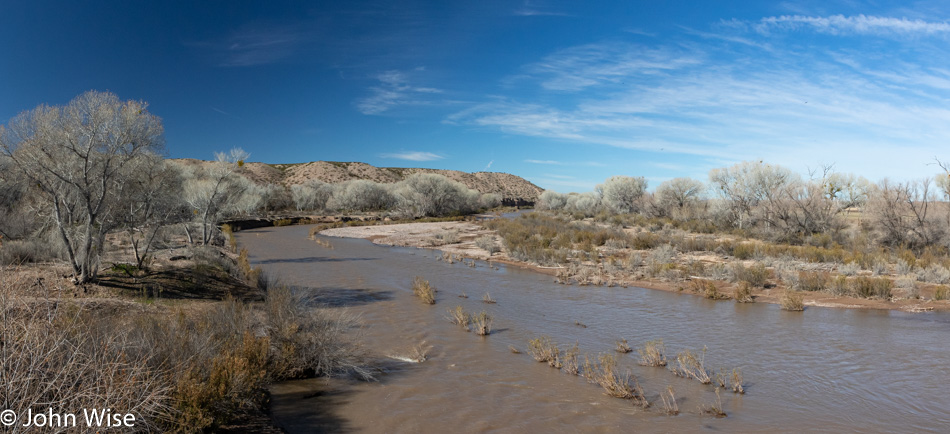
I don’t think we drove much more than 20mph on our short loop out the Virden Highway and back up Franklin Road. Along the way, we stopped to admire a small flock of sandhill cranes in a farmer’s field, and then next door, Caroline pilfered a bunch of pecans that were still on the trees. She’d call it gleaning; I just hung my head in shame.
The muddy water racing by is the Gila River. It gets its start near the Continental Divide in some mountains east of us and then collects the waters of almost half a dozen other rivers as it passes through Phoenix until reaching the Colorado River down near Yuma, Arizona. After traveling a length of the river today and having watched the patterns of the sandhill cranes this morning, it is obvious that they stay very close to the river while out looking for food.
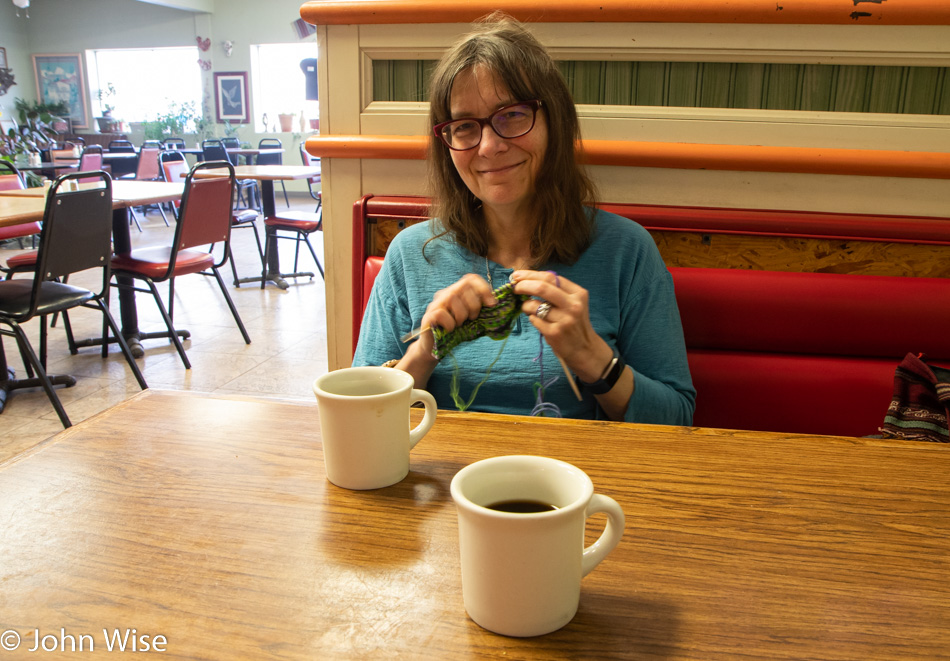
After a meander over the countryside listening to Westlin’ Winds by Robert Burns, we are back in Duncan at Hilda’s for some Mexican food though I wimped on trying the Meat Daddy, which now seems more appropriate while listening to At Seventeen by Janis Ian.
The Rugged and Obese could be the tagline for many of these out-of-the-way outposts that were once something and are now, more often than not, on their way to oblivion. From the amount of tossed-off beer cans, shooters, and broken glass the drinking problems that are supposed to relieve loneliness are hard at work here where little else is found.
Lunch is solid, but hopefully, not so much that it leads us to a siesta. While coffee might be in order about now to ward off drowsiness, we know in a place like this, it’ll be something along the lines of Folgers or Yuban, and after years of strong coffee, that stuff seems like water dolled up to look like coffee, but it’s not fooling us.
With nothing else needing our attention, the thought of just sitting here sipping coffee and smoking while talking about nothing sounds appealing if it weren’t for the fact we neither enjoy smoking nor is it allowed in restaurants anymore. Funny that we grew up in an age where smoking at the table was the norm. To compensate, Caroline has fetched her knitting while I swipe notes into my smartphone, allowing us to skip the chatting part, too; at least we have “coffee.”
Ruth just came in. Strangely enough, this is the third time running into her in less than 24 hours. Last night in Safford at Walgreens, we stopped and picked up Girl Scout cookies from her and the troop. Then, this morning, heading out of Duncan, we pull up to get gas, and there’s Ruth chaperoning some other girls, so we buy even more cookies we don’t need.

We are way out in the middle of nowhere. The junction is called Three Way, and over 60 years ago, when this giant movie screen was erected, it must have drawn people in from far and wide. I can still hear the echoes of excitement as the car got into position and the tinny speaker was pulled into the car as maybe Cary Grant in To Catch A Thief or James Dean in Rebel Without a Cause flickered onto the screen back in 1955. Walking over to the refreshment counter for a fountain drink and the smell of fresh popcorn would round out the treat of visiting this window to the world that may as well have been a million miles away from those who worked on the ranches and in the mines of rural Arizona and New Mexico.
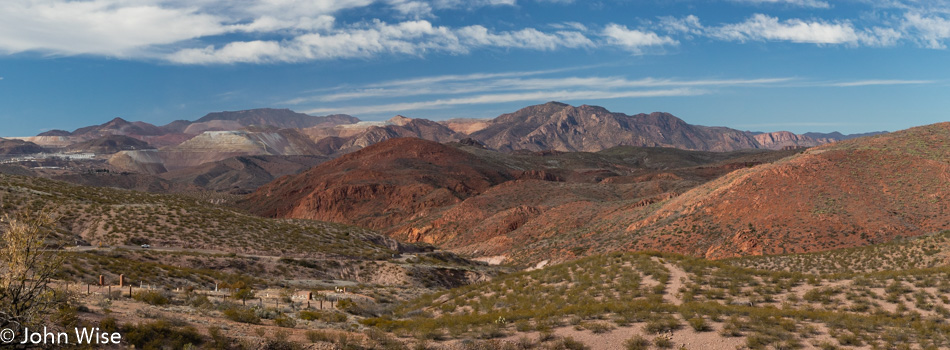
While we miss the paper maps of yore, the in-dash panel of our Kia Niro hybrid features maps that are seriously accurate for letting us find alternate routes to places. A small side road took us out for some nice views towards Morenci and its mining operations (left side of the photo) and past the Clifton Cemetery.

Masin Greenlee may be the most famous person buried at the Clifton Cemetery as one of the 15 counties in Arizona, Greenlee County is named after him. But there are 1098 other people buried in these rugged and rocky mountains, including a number of children such as Baby Goss here, who died December 30, 1924, on the same day this infant was born. There were a number of graves from back in that time where babies didn’t make it or lived only a few days before passing on.

Clifton, Arizona, is as close to being a ghost town as it can get. If the local mining operation were to cease, this town would blow away. Turns out that it’s almost washed away a number of times due to storms that created catastrophic flooding of the nearby San Francisco River.
This is not our first visit to Clifton, but it is one of the saddest. We’ve enjoyed peeking into derelict old buildings on previous visits, but today, they are mostly boarded up. We can only figure it’s due to vandalism. We’d ask someone, but nobody is around to ask. Most of the few shops that are here are closed on Saturday, which baffles us. There was one small shop open towards the end of Chase Creek Street where a young woman shared some of the pleasures and struggles of living in a town with such difficult living conditions regarding work and the availability of simple things like credit and loans to buy houses and such.
Speaking of Chase Creek Street, that catastrophic flooding I spoke of was exacerbated by the fact that the main road that slices through this part of Clifton and this historic district is part of the creek that, while small or non-existent in dry years, has been known to achieve flows of water that rival the Colorado river when reaching flood stages. We learned about this as we finally Googled why this town has giant steel doors at the south end of the place that are reminiscent of flood gates used in Japan, where tsunamis occur: those doors are part of Clifton’s flood control.
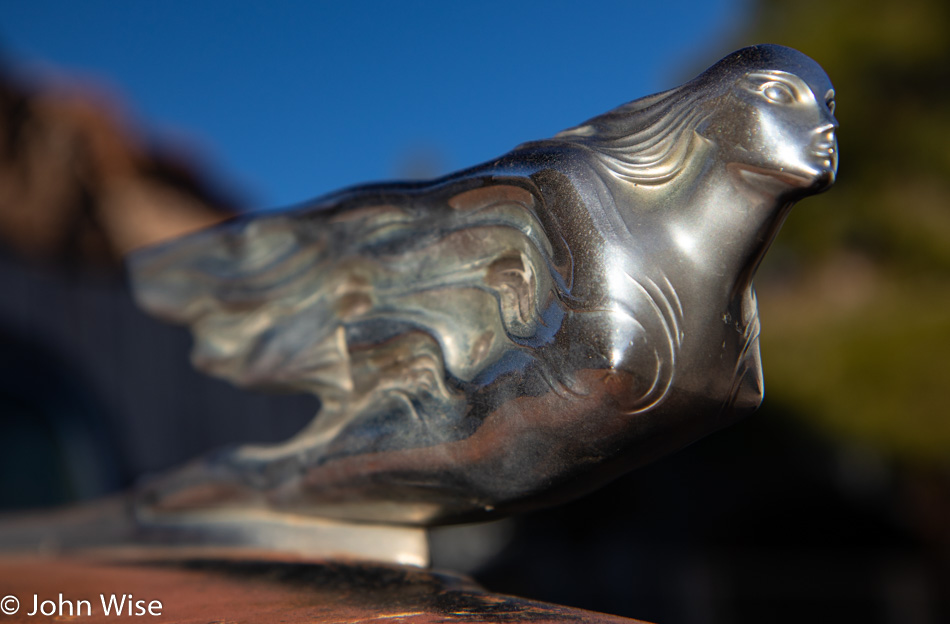
I think this is the Flying Lady from a 1941 Cadillac, but I’m only about 95% certain. I wonder if the owner knows these hood ornaments can sell for about $750, and if he did, would it still just be sitting out next to the street? A few doors down was another intriguing hood ornament on what might have been a 1950s Cadillac.

Getting ready to leave town, we ran into this team of bighorn sheep with that ram over there giving me stink eye more than once.
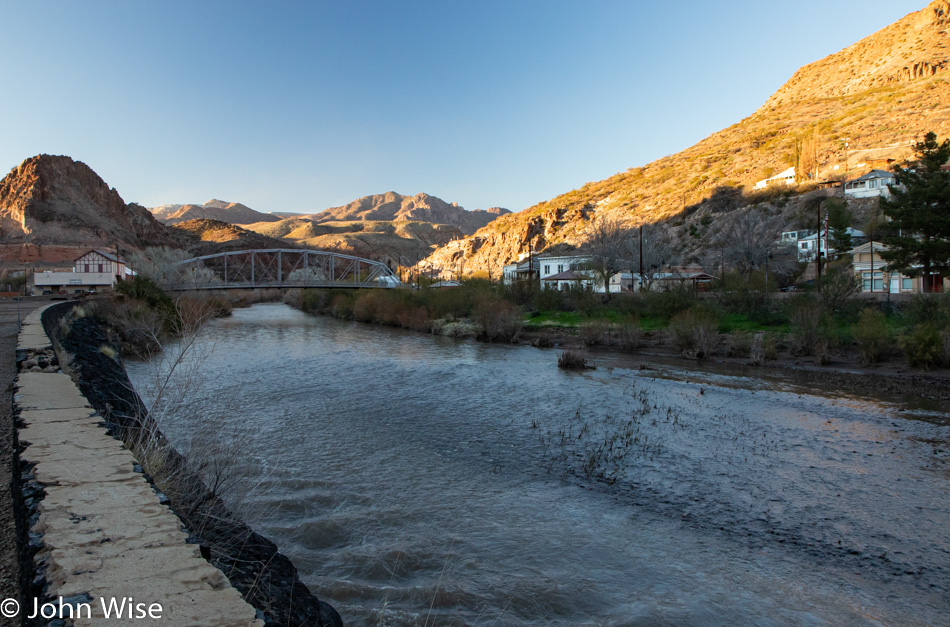
This is the San Francisco River that in 1983, was moving 56,000 cubic feet per second of floodwater through its channel. Today during our visit, it’s only about 520 cubic feet per second. With fading light, we pointed the car south to return to Duncan and get some dinner at the Ranch House before settling in at our cozy hotel. As we head into being tired and seriously satisfied with the day, we are at a loss for what we might do tomorrow. Having that kind of flexibility is not a bad thing.